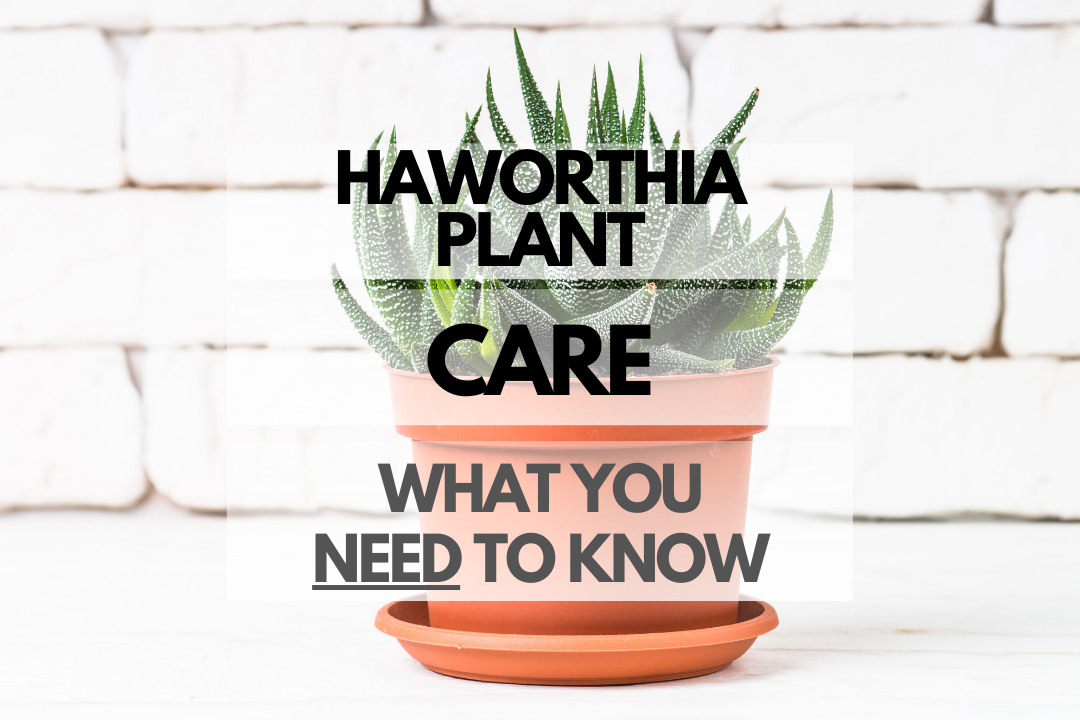Welcome to the ultimate guide for Haworthia plant care! These little succulents are not only cute and easy to care for, but they also add a touch of green to any space. In this guide, we’ll take a deep dive into everything you need to know to keep your Haworthia plant healthy and happy. So, let’s get started!
Haworthia Plant Care Guide
Quick Reference Table: Caring for Haworthia Plant
| Aspect | Details |
|---|---|
| Light | Bright indirect sunlight |
| Soil | Well-draining, porous mix (cactus or succulent soil) |
| Water | When soil is dry, about every 2-4 weeks |
| Temperature | 60-85°F (15-29°C) |
| Pruning | Minimal, only to remove dead leaves |
Haworthia Sunlight: Do They Need It and How Much?
Haworthia plants love bright, indirect sunlight. Direct sunlight can cause their leaves to burn or turn yellow, so it’s best to place your Haworthia in a spot with filtered light. A windowsill with a sheer curtain or a spot near a window that gets plenty of light throughout the day is perfect for these succulents.
Haworthia Soil Tips
The key to a happy Haworthia is well-draining soil. A cactus or succulent soil mix is ideal, as it provides the right balance of drainage and aeration. You can also make your own mix by combining equal parts potting soil, perlite, and coarse sand. This will help prevent root rot and keep your Haworthia healthy.
Haworthia Watering and Frequency
As with most succulents, it’s essential to avoid overwatering your Haworthia plant. Allow the soil to dry out completely between waterings, which is typically every 2-4 weeks. When it’s time to water, give your plant a thorough soak, allowing the excess water to drain out of the pot. Remember, it’s better to underwater than overwater!
Pruning Haworthia Properly
Pruning your Haworthia plant is a breeze, as they typically require minimal maintenance. The only pruning needed is to remove any dead or withered leaves. This will not only keep your plant looking its best, but it will also prevent any potential rot or pests from taking hold.
Optimal Haworthia Temperature: Can They Tolerate the Cold?
Haworthia plants prefer temperatures in the range of 60-85°F (15-29°C). They can tolerate cooler temperatures, but it’s essential to protect them from frost and freezing temperatures. If you live in a colder climate, consider growing your Haworthia indoors during the winter months to keep them warm and happy.
Common Haworthia Problems
Overwatering
Overwatering is a common issue with Haworthia plants, leading to root rot and eventual plant death. To avoid this, ensure that your plant is in well-draining soil and that you allow the soil to dry out completely between waterings.
Underwatering
While underwatering is less common, it can still cause problems for your Haworthia. If you notice the leaves becoming wrinkled or shriveled, it’s a sign that your plant needs more water. Adjust your watering schedule accordingly to ensure your plant stays hydrated.
Sunburn
Direct sunlight can cause Haworthia leaves to burn or turn yellow. To prevent sunburn, place your plant in a spot with bright, indirect sunlight.
Haworthia Outdoors vs Indoors
Haworthia plants can be grown both indoors and outdoors, depending on your climate and preference. To help you decide, here’s a handy pros and cons list:
| Pros | Cons | |
|---|---|---|
| Indoors |
|
|
| Outdoors |
|
|
Best Pots for Haworthia
When choosing a pot for your Haworthia plant, it’s essential to prioritize drainage. Look for a pot with drainage holes to prevent water from sitting at the bottom, which can lead to root rot. Terracotta pots are an excellent choice, as they are breathable and help wick moisture away from the plant’s roots. If you prefer a different type of pot, just be sure it has adequate drainage and is the right size for your plant.
Haworthia Plant Facts
Haworthia Benefits
Haworthia plants offer several benefits that make them an excellent choice for both beginner and experienced plant enthusiasts:
- Low maintenance: Haworthia plants are easy to care for and don’t require a lot of attention, making them perfect for busy plant lovers.
- Air purification: Like other succulents, Haworthia can help purify the air in your home by absorbing carbon dioxide and releasing oxygen.
- Compact size: Their small size makes Haworthia an excellent choice for small spaces, such as apartments or desks.
- Stress relief: Studies have shown that caring for plants can help reduce stress and promote a sense of well-being.
Growth Rates: How Fast Do They Grow?
Haworthia plants are slow-growing, typically taking several years to reach their full size, which is usually between 3 to 5 inches in height. This slow growth rate makes them an excellent choice for small spaces and allows them to maintain their compact form without becoming overgrown.
Haworthia Lifespan
With proper care, a Haworthia plant can live for many years, often exceeding 10 years of age. They are long-lived succulents that will continue to grow and thrive with the right care and attention.
Are Haworthia Plants Safe?
Good news! Haworthia plants are considered non-toxic to humans, cats, and dogs. This makes them a safe option for households with pets and children. However, it’s always a good idea to keep plants out of reach to avoid any potential chewing or ingestion.
Haworthia Flowers
Haworthia plants can produce small, tubular flowers on long, slender stems. These flowers are typically white or pale green and may have a sweet fragrance. Although not as showy as other succulent flowers, they add a touch of beauty and charm to your Haworthia plant.
Haworthia Types and Varieties
There are numerous types and varieties of Haworthia plants, each with its unique appearance and characteristics. Some popular types of Haworthia include:
Haworthia cooperi
Haworthia cooperi is a small, slow-growing succulent with bubble-like leaves that are transparent at their tips. This unique feature allows light to penetrate the leaves and helps the plant photosynthesize more efficiently in low-light conditions.
Haworthia attenuata
Also known as the zebra plant, Haworthia attenuata features dark green leaves covered in white horizontal stripes. This attractive succulent is perfect for adding contrast and texture to your indoor garden.
Haworthia limifolia
Haworthia limifolia, or the fairy washboard plant, is characterized by its triangular leaves with distinctive ridges running across the surface. This variety is particularly hardy and can tolerate slightly cooler temperatures than other Haworthias.
Haworthia Pros and Cons
| Pros | Cons |
|---|---|
|
|
Haworthia Cost
The cost of a Haworthia plant can vary depending on the size, type, and source. Generally, you can expect to pay between $5 and $20 for a small to medium-sized Haworthia plant. Rarer varieties may be more expensive.
Where to Buy Haworthia
Haworthia plants are widely available and can be found at local nurseries, garden centers, and online retailers. Some specialty succulent shops may also carry a wider selection of Haworthia varieties. Be sure to purchase your plant from a reputable source to ensure it is healthy and well-cared for.
Is Haworthia Propagation in WaterPossible?
Yes, Haworthia propagation in water is possible, although it is less common than soil propagation. To propagate in water, remove a healthy leaf or offset from the parent plant, allow the cut to callous over for a day or two, and then place it in a container of clean water. Be sure the water only covers the bottom part of the leaf or offset, and change the water every few days to prevent bacterial growth. Roots should begin to form within a few weeks. Once roots have developed, you can transfer the new plant to a well-draining soil mix.
Additional Resources
If you’re looking for more information and resources on Haworthia plant care, check out the following:
- Haworthia Care and Cultivation
- Haworthia Subreddit
- Haworthia Facebook Group
- World of Succulents – Haworthia Articles
FAQ for Haworthia Care
Are Haworthia toxic to cats?
No, Haworthia plants are considered non-toxic to cats.
Are Haworthia toxic to dogs?
No, Haworthia plants are considered non-toxic to dogs.
Are Haworthia toxic to kids?
No, Haworthia plants are considered non-toxic to humans, including children.
How tall do Haworthia get?
Haworthia plants typically grow between 3 to 5 inches tall, depending on the variety.
Can Haworthia live outside?
Haworthia plants can live outside in warm climates where temperatures don’t drop below freezing. They prefer bright, indirect sunlight and should be protected from direct sunlight, which can cause sunburn.
Are Haworthia poisonous?
No, Haworthia plants are not poisonous and are considered non-toxic to humans, cats, and dogs.
In conclusion, Haworthia plants are a fantastic addition to any indoor garden. Their unique appearance, low maintenance requirements, and non-toxic nature make them perfect for plant enthusiasts of all skill levels. Happy growing!

